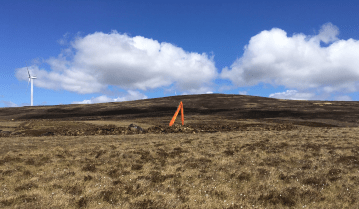If you have Liquid Petroleum Gas (LPG)/Propane on site, have you undertaken a DSEAR Risk Assessment?
23rd February 2024 - Written by Connor McGimpsey
This article, authored by Erwan Prot, Director – Safety and Connor McGimpsey, Senior Occupational Hygiene and Safety Consultant discusses the Dangerous Substance and Explosive Atmospheres (Northern Ireland) Regulations 2003 (DSEAR), highlighting the legal requirement of risk assessing where sites have Liquid Petroleum Gas (LPG)/Propane LPG tanks, transmission pipelines and/or cylinders. These types of installations are very common in Northern Ireland, and (in our experience) are often overlooked by companies during their DSEAR assessment process.
What is the issue?
The Dangerous Substance and Explosive Atmospheres (Northern Ireland) Regulations 2003 (DSEAR) apply to a number of hazardous substances which present a threat of fire, explosion or other energy-releasing events. This includes sites with Liquid Petroleum Gas (LPG) storage and distribution, a common heat source for industrial processes for sites located off the mains gas network in Northern Ireland, as well as being a fuel source for forklifts and gas cutting devices. Very similar requirements will also apply to other form fuel source (Kerosene, Diesel, etc).
Risk assessing these installations is a legal requirement and an expectation of both the regulator and your insurer. The assessment will present an assessment of necessary measures to protect life. Although the DSEAR Risk Assessment will not replace the Fire Risk Assessment, the two assessments should be complementary.
Even without a serious incident that results in damage, injury or loss of life, non-compliance can have serious consequences in terms of reputation or regulatory intervention.
What should you do?
If LPG tanks and/or cylinders are used on your site, you need to:
- Prepare a suitable and sufficient risk assessment.
- Eliminate and reduce the risk from dangerous substances.
- Complete a formal Hazardous Area Classification (HAC).
- Manage ignition sources within hazardous areas.
- Establish provision to deal with accidents, incidents and emergencies.
- Provide information, instruction and training to all relevant personnel.
- Ensure dangerous substances can be identified on site.
How our Team of Safety Professionals can support
Our consultants and engineers can provide DSEAR risk assessment and undertake Hazardous Area Classification for your LPG installations, which in turn helps ensure that electrical equipment is safely specified to relevant (ATEX) standards. We will also prepare a prioritised action plan to mitigate the risk.
Risk assessments can be carried out with due regards to relevant industry standards and best practice, for instance Liquid Gas UK Codes of Practice and the Energy Institute model code of practice. The corresponding “ATEX assessment”, or also referred to as Hazardous Area Classification (HAC), is also required to comply with the regulations shall be carried out according to relevant standards (namely, BS EN 60079-10-1:2015 Classification of Areas – Explosive Gas Atmospheres and EI 15: Area Classification for Installations Handling Flammable Fluids, 2021). Note: As relevant, other guidance may be used to support any area classification and/or risk assessment, e.g. Health and Safety Guidance Notes, Approved Codes of Practice and British Compressed Gas Association Codes of Practice.
If you would like to discuss in relation to your business, please contact Connor McGimpsey (Senior Occupational Hygiene and Safety Consultant) at mcgimpsey@mabbett.eu.












 Previous
Previous 

